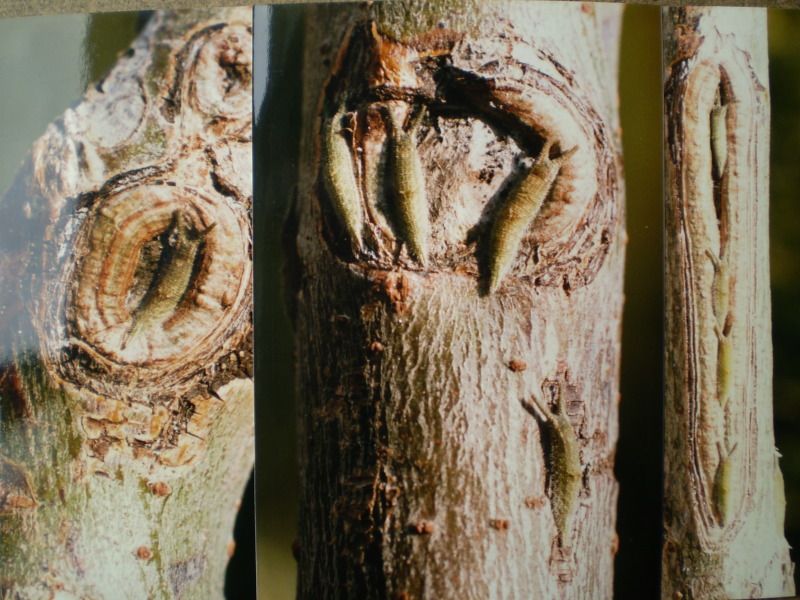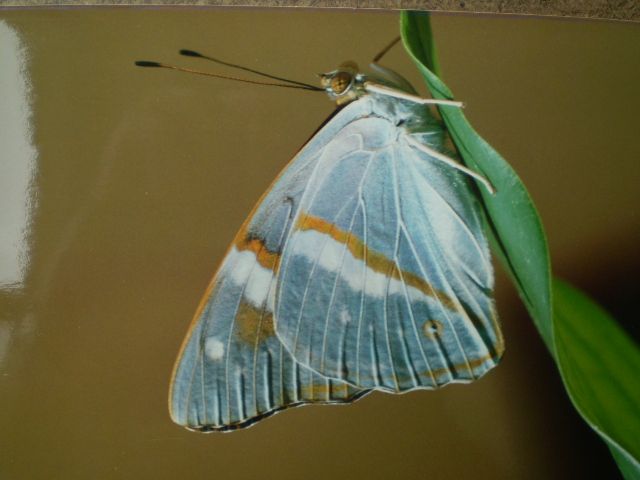I had a lot of work to do today but it was the sort of work I can do on a train, so Minnie and I nipped down to Aigle first thing and caught the 08h16 to Domodossola, in Italy, arriving 10h17. The main target was Hungarian glider but Italy trips are always interesting for more than just their targets.
It is a long slog up a steep hill to what I call my main glider site so we broke the haul at a small nettle-tree site. Just one, rather tatty nettle tree butterfly was flying ; but more significantly, almost the first thing I saw was a Hungarian glider. This is several kilometres from the ‘main’ site and there is no foodplant here. I got a single, poorly focused and distant shot :

Also flying at that site (including on my return trip) were small skippers, purple-shot coppers, red admirals, marbled whites, heath fritillaries, assorted whites, a brimstone, loads of chequered blues and a few holly blues.





(Jack Russells have no fear of heights - when we were near cliff edges I attached her to me just in case ...)
Some of those pictures were taken on my return trip, back down the valley. On that visit, just as I was packing the bags to go, another nettle tree butterfly landed near me. I just had time to get the camera out again, catch a lousy shot, and it was off. But this one was fresh. I understood the morning one to be a leftover from the spring brood. This one is clearly summer brood. That leaves open the possibility of nettle tree butterflies meeting their own children – something that doesn’t happen often in the butterfly world.

At the main glider site, there was chaos. Part of the site had been razed and raised to make a car park and my usual walk along the other side of the river was entirely overgrown. Nevertheless, we waded through the river, fought our way through the undergrowth and found a few patches of goatsbeard, the foodplant of Hungarian glider. We also saw a couple of gliders, though neither stopped. Then we noticed a good patch of foodplant, with gliders circling around it, back on the other side of the river.

At this point the river was thigh deep and fast-flowing and I didn’t think I could get across with Minnie and my camera, so I left Minnie and waded through myself. She was not happy !

Even though I was only a few metres away, she tried to cross herself, with nearly disastrous consequences, so I left the camera, waded back through, picked her up in one arm, and took her to join me. It was all quite an adventure for Minnie but in the end the gliders wouldn’t stop gliding and I got just one, very poor shot of one of them. It didn’t matter at all. To stand there in the sun with
Neptis gliding around my head was just wonderful.

We retraced our steps, crossed the river again (twice), and had a look in one of the meadows. There, heath, knapweed, dark green and high brown fritillaries were all flying. This is the form
cleodoxa of high brown – something I very rarely come across :

(the upperside looks normal)

(the underside is special)
There were scarce coppers and purple-shot coppers in the same meadow.

Before getting the train back to Switzerland we checked out some rough ground in Domodossola for short-tailed blues, which I hadn’t seen yet this year.


A surprise grayling turned up there too:

Then, out of the blue, a lesser purple emperor form
clytie, suddenly flew in, landed and left. No chance for great shots but here’s the record :


Finally, again after I had just packed everything away and put Minnie in her bag for the ride to the station, another nettle tree butterfly flew in, landed briefly, and flew off again. I’m not aware of any nettle tree on this rough ground – I guess this is just a flighty butterfly.
Guy











































